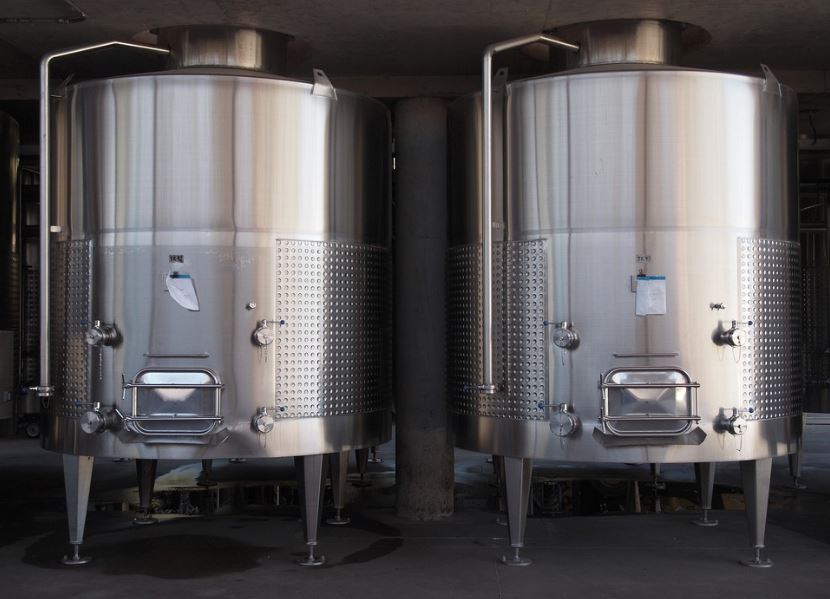Storage tanks are essential in a wide range of enterprises and institutions, including industrial and processing industries, farming or ranch activities, fire protection agencies, water purification facilities, and city water supply networks. They may hold a variety of fluids and dry commodities, such as drinkable or non-potable water, sewerage, food items, sludge, dirt, and other things. To really be cost-effective and dependable, they have to be capable to be rapidly and readily built and placed, as well as be sturdy enough to survive for decades without breaches or regular maintenance.
Both masonry and reinforced steel containers are long-lasting and dependable storage choices, however, they are costly, difficult to build, and tough to manage. Another alternative is riveted steel tankers, which are made in pieces at a supervised facility before being brought to your place and rapidly and effectively constructed on spot. They provide the robustness of welded metal tanks while being more flexible and easy to maintain.
Things to consider before buying:
Technical drawings:
It’ll be in the best interests to request your steel tank manufacturer detailed drawings, along with a broad view, along with the proposal for a stainless metal tank. Many factors, including as rail alignment, total tank measurements and occupancy, and lid placement and opening orientation, might cause serious issues when the architecture is inappropriate with your facility and the steel structure. If you purchase a stainless processing container, the tank’s location in the operation may not accept such inaccuracies.
Welding method:
When placing tank requests, the first question you must ask the producer is about production procedures, not the cost of the stainless tanks. The welding process is a crucial component that affects the lifespan of your latest tank that almost all people overlook. Inquiring with the maker about the metalworking procedures to be utilized in your tanks will help you avoid future problems.
Pickling and passivation:
Stainless steel’s protective coating deteriorates as a result of any surface modification during the production process. Following soldering your stainless steel tanks, obtain pickling and passivation for your vendor. Plates must be PVC covered to minimize abrasion of the outside surface throughout the production, transit, and installation phases. If this is a food container, notify the maker that the interior metalworking seams must be polished to avoid bacterial development on the inside surface.
Benefits of steel tanks:
Different sizes available:
Bolted storage tanks are available in a broad range of sizes, from just few thousand barrels over a million. These may be customized to match your specific use, with variable dimensions, heights, and many other features. Tanks can also be constructed high and narrow for such a smaller space in regions where room is restricted, and they might be made broader in locations where vertically space is confined. The design possibilities are virtually endless and can provide significant flexibility in challenging situations.
Getting LEED certification:
Did you realize that employing recycled steel items is essential for projects aiming for LEED accreditation? Highland Tank may assist your firm in obtaining important Components and Assets credits, which are not frequently gained and may be a significant component in the growth of your business.
Easy to maintain and repair:
Cement and field-welded storage tanks require regular service which can be challenging to fix if they are damaged, necessitating the use of specialized equipment and employees with soldering and concrete knowledge. Because of its long-lasting finish and dependable valves and equipment, riveted steel tanks need little maintenance.
Quick to install:
Most of the manufacture and installation of masonry or forged steel tanks takes place on-site, necessitating a great quantity of trained work and lots of time. Furthermore, due to the characteristics of the operation, masonry and welded container installations are frequently delayed by adverse conditions, increasing unavailability and possible expenditures.
The Advantages of Steel Buildings
Steel buildings represent a significant advancement in construction technology, offering a range of benefits that make them a preferred choice for various applications. Their durability is a standout feature; steel structures are known for their strength and ability to withstand harsh weather conditions, including high winds, heavy snow, and seismic activities. This resilience translates to lower maintenance costs and a longer lifespan compared to traditional building materials. Additionally, steel buildings offer remarkable versatility in design, accommodating a wide range of architectural styles and functional needs. The speed of construction is another advantage, as steel components can be prefabricated and assembled quickly on-site, significantly reducing building time and labor costs. The environmental aspect is also noteworthy; steel is a sustainable material, often made from recycled content and itself being fully recyclable, which minimizes its ecological footprint. This combination of durability, flexibility, cost-effectiveness, and sustainability makes steel buildings a smart choice for commercial, industrial, and even residential constructions.
Final thoughts:
Purchasing a stainless container has grown more common as potential purchasers have become more aware of the benefits of steel material. All across the planet, you may witness little or large stainless steel buildings, generally made up of stacked horizontal tubes. The stainless tanks’ long-lasting construction, the reality that they should not lack value over time, and the reality that they really do not sacrifice on their attributes, provide customers with significant cost savings.

